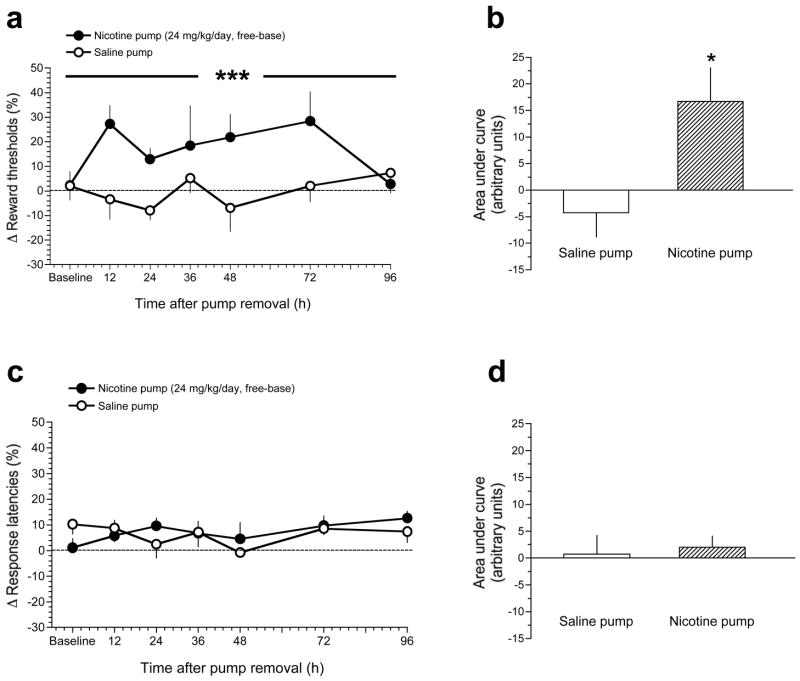Figure 3.
Effects of spontaneous withdrawal from nicotine delivered via osmotic minipump on ICSS thresholds in mice. A, data are expressed as mean (±S.E.M.) percentage change of reward thresholds in mice during the baseline period (see Methods) and after surgical removal of osmotic minipumps delivering saline or nicotine (24 mg/kg/day, free-base), assessed 12, 24, 36, 48, 72 and 96 h after pump removal. B, reward threshold data presented in panel A for saline- and nicotine-treated mice are expressed as mean (±S.E.M.) area under the curve (AUC). C, data are expressed as mean (±S.E.M.) percentage change of response latencies in mice during the baseline period (see Methods) and after surgical removal of osmotic minipumps delivering saline or nicotine (24 mg/kg/day, free-base), assessed 12, 24, 36, 48, 72 and 96 h after pump removal. D, response latency data presented in panel C for saline- and nicotine-treated mice are expressed as mean (±S.E.M.) AUC. *** P < 0.001, different from saline-treated mice, main effect of Pump in two-way repeated measures ANOVA (see Results). * P < 0.05, different from saline-treated mice, unpaired t-test.

